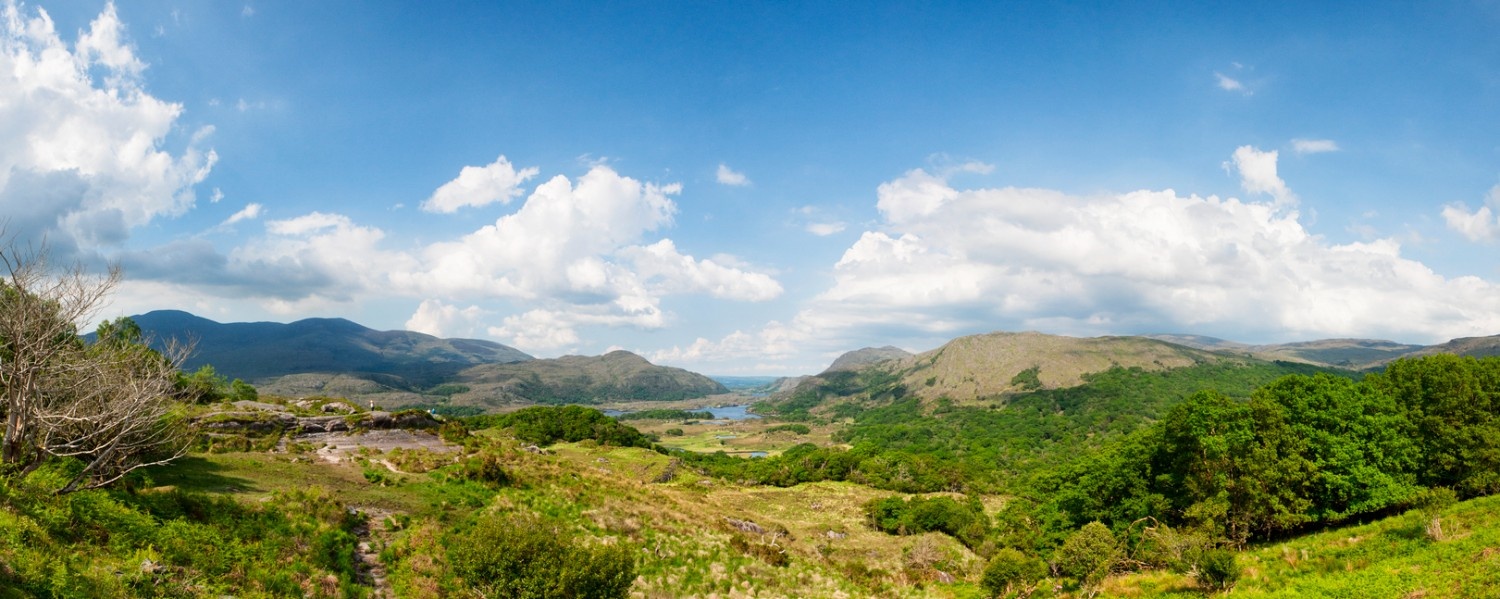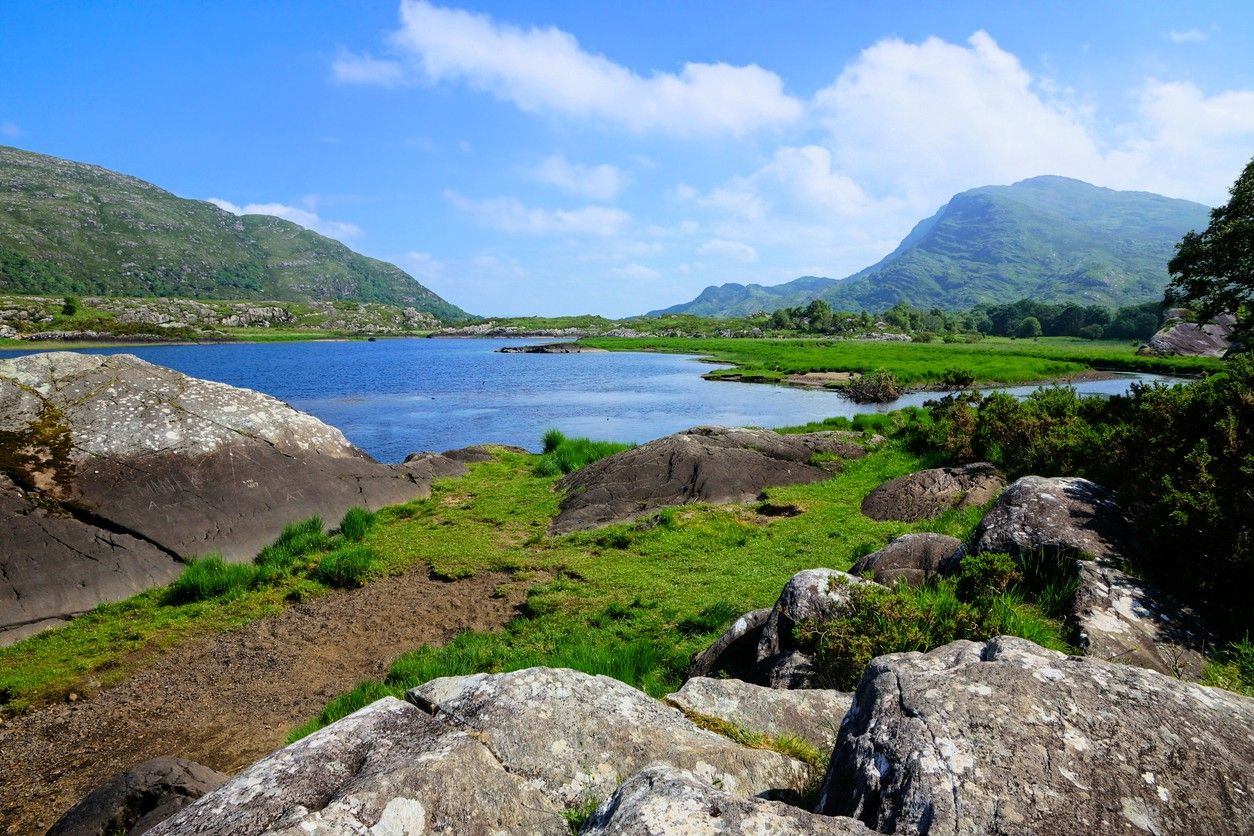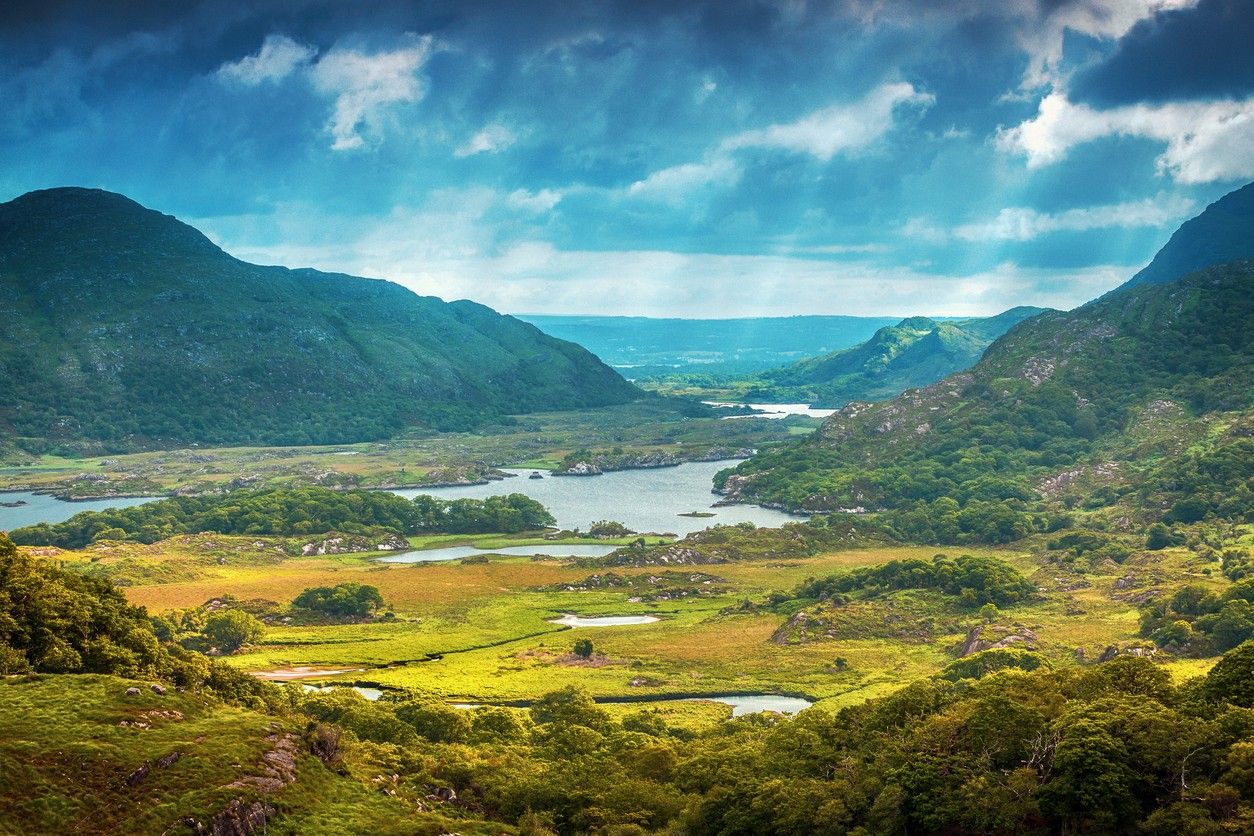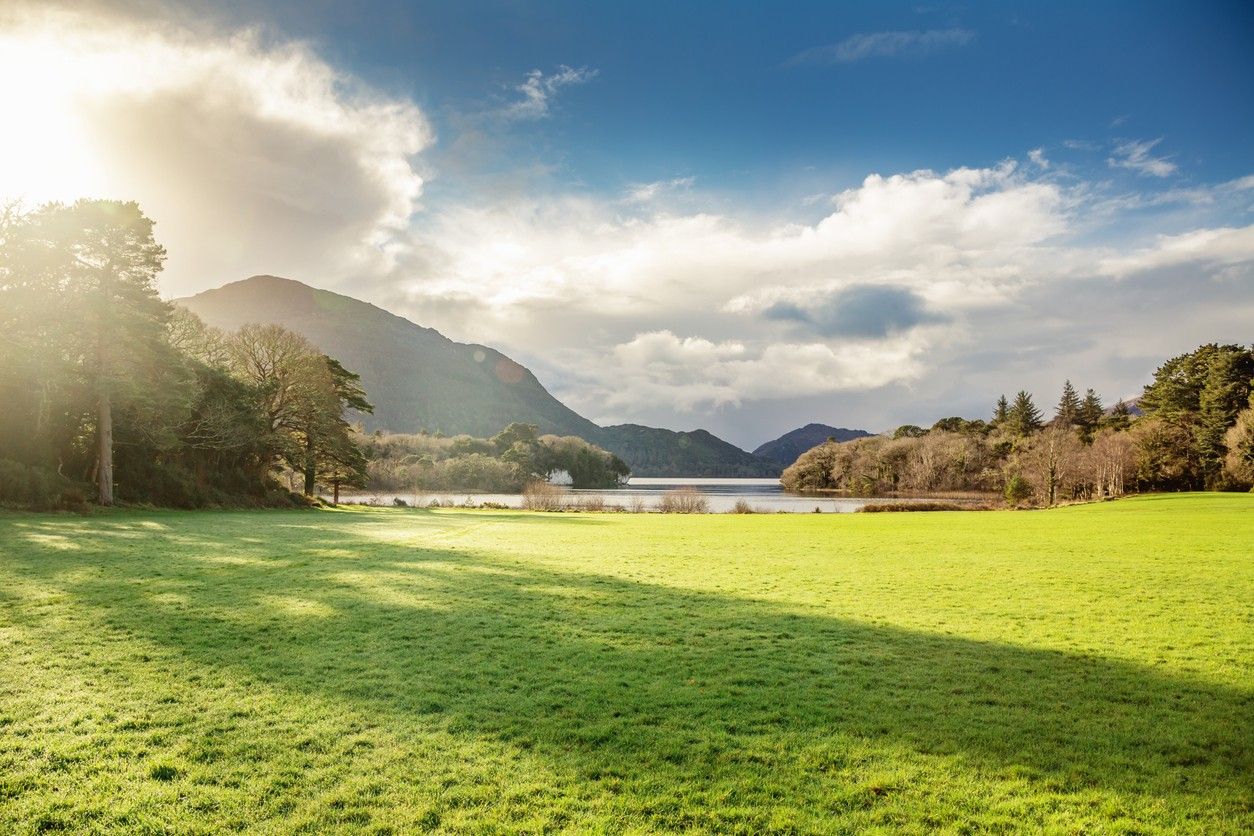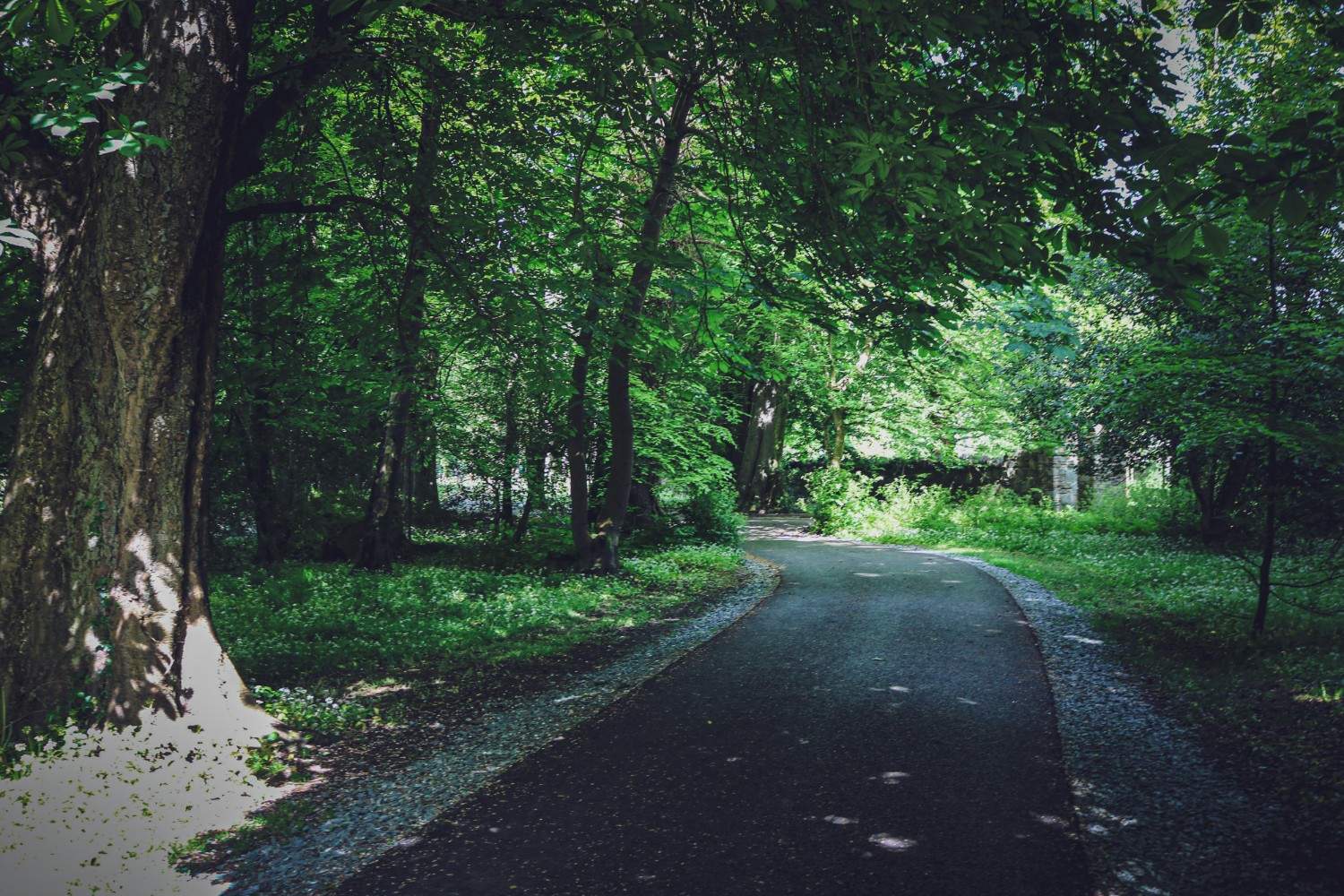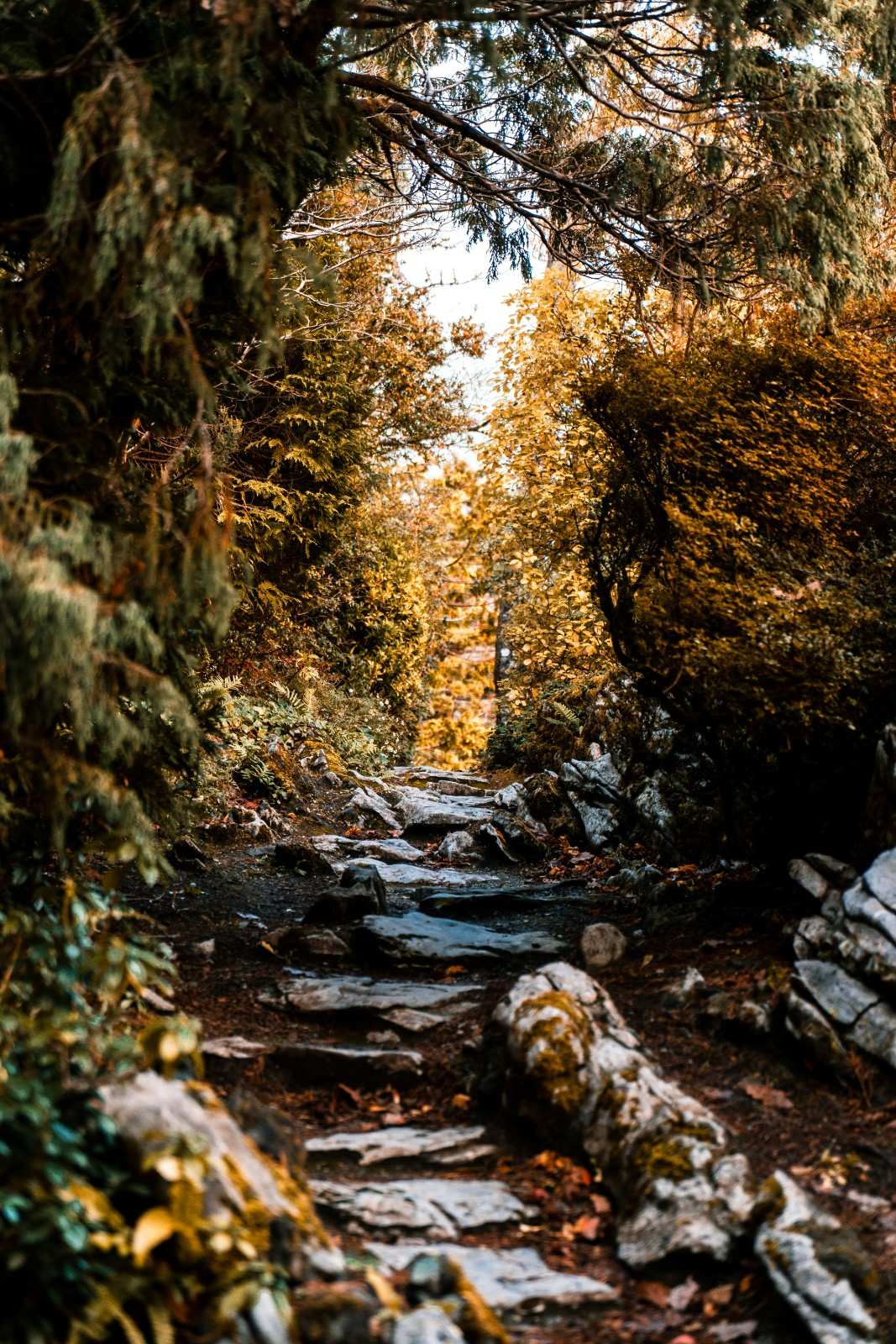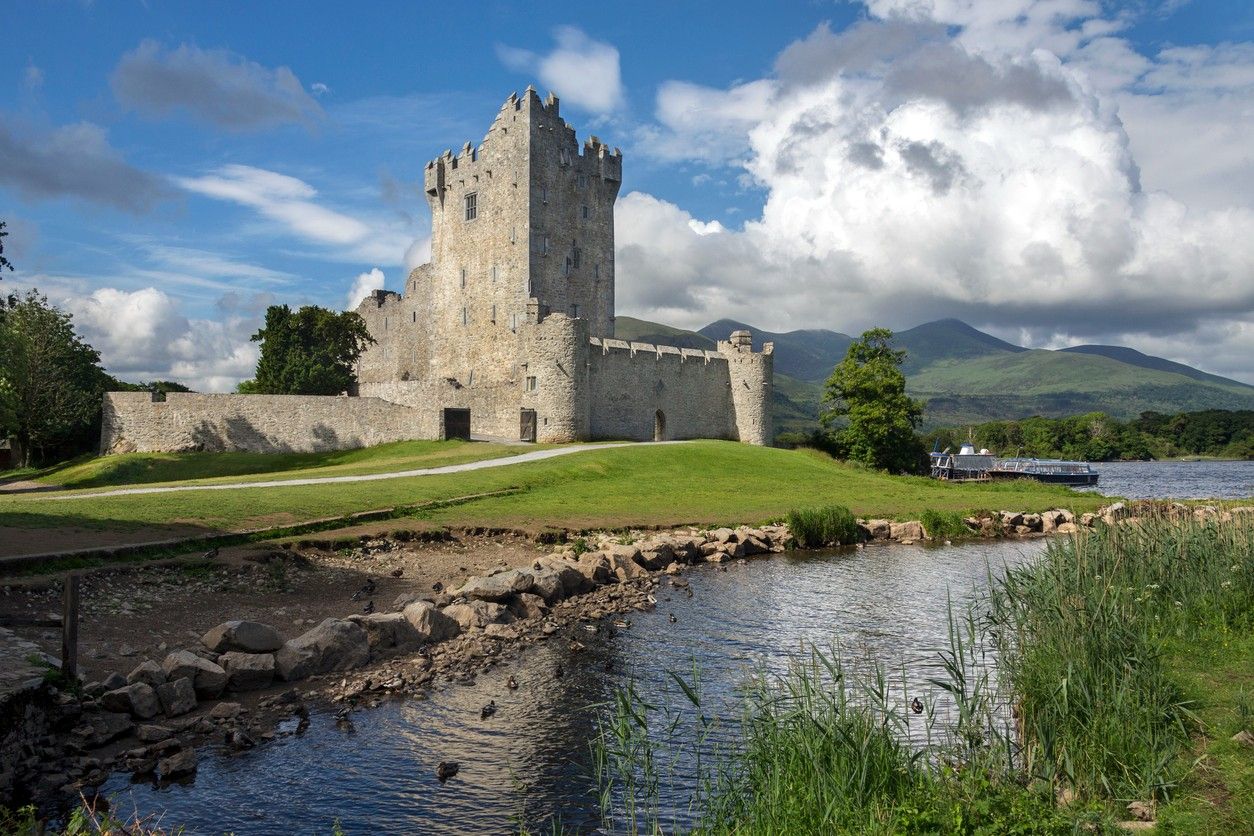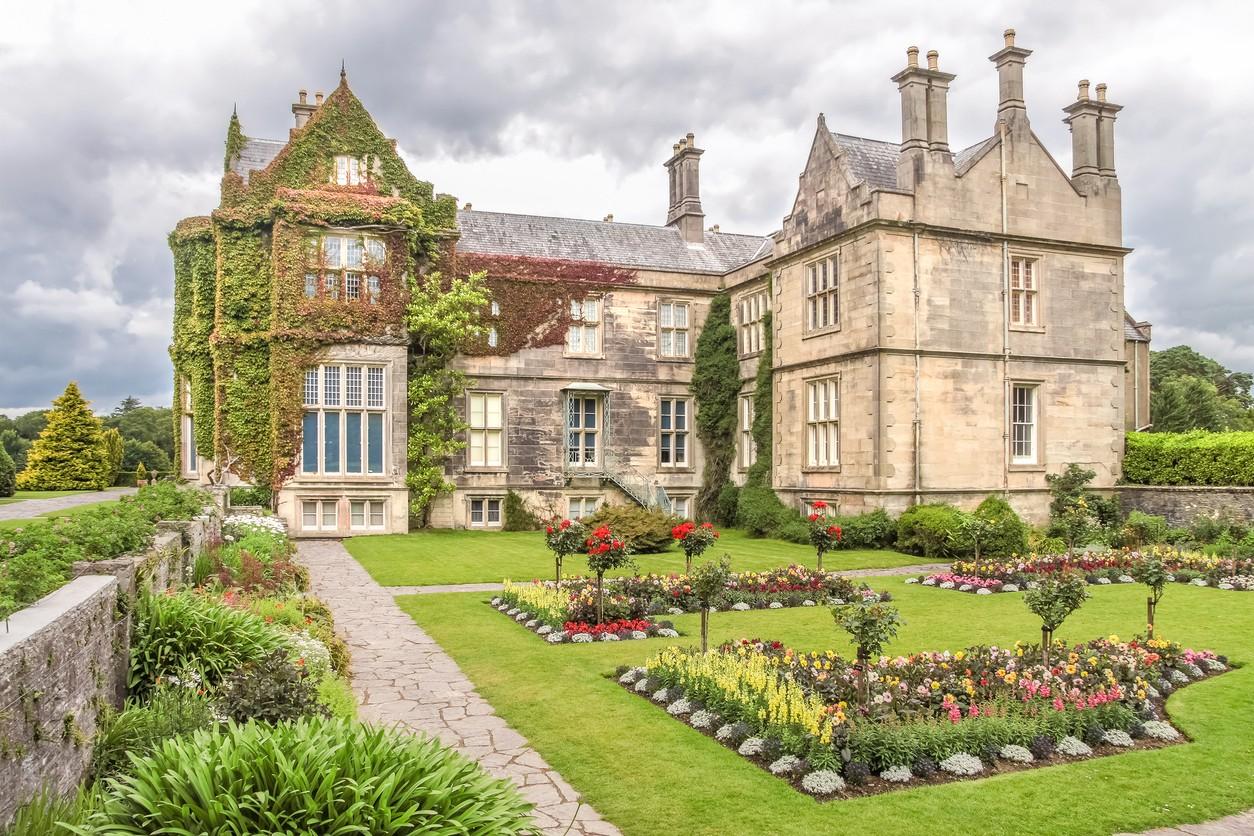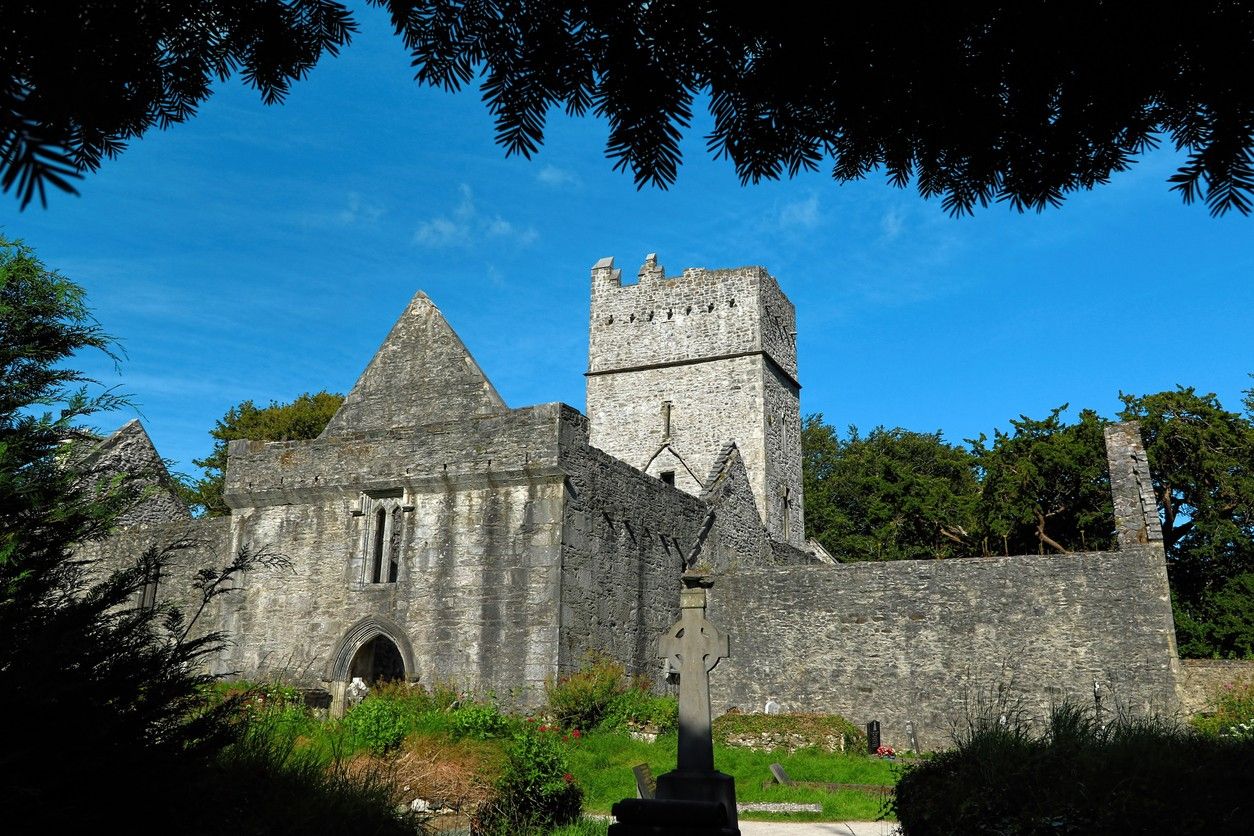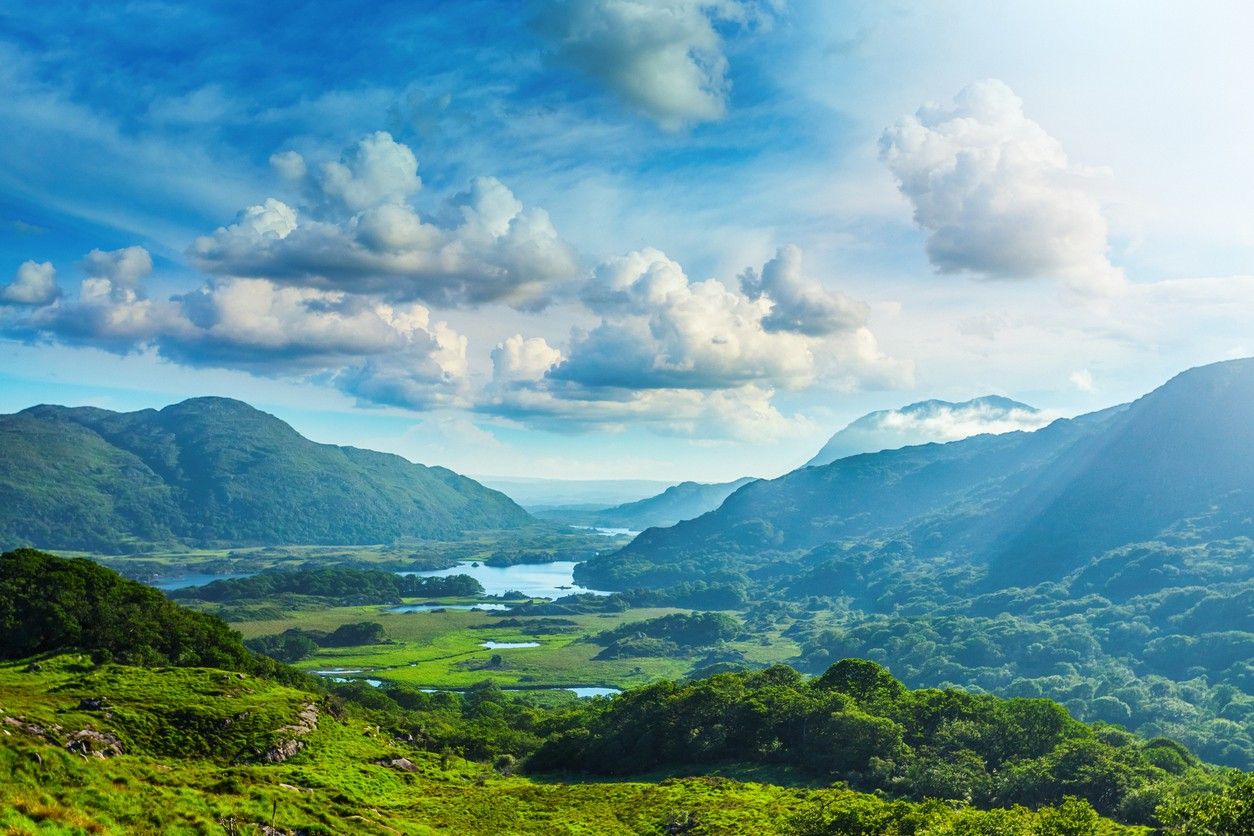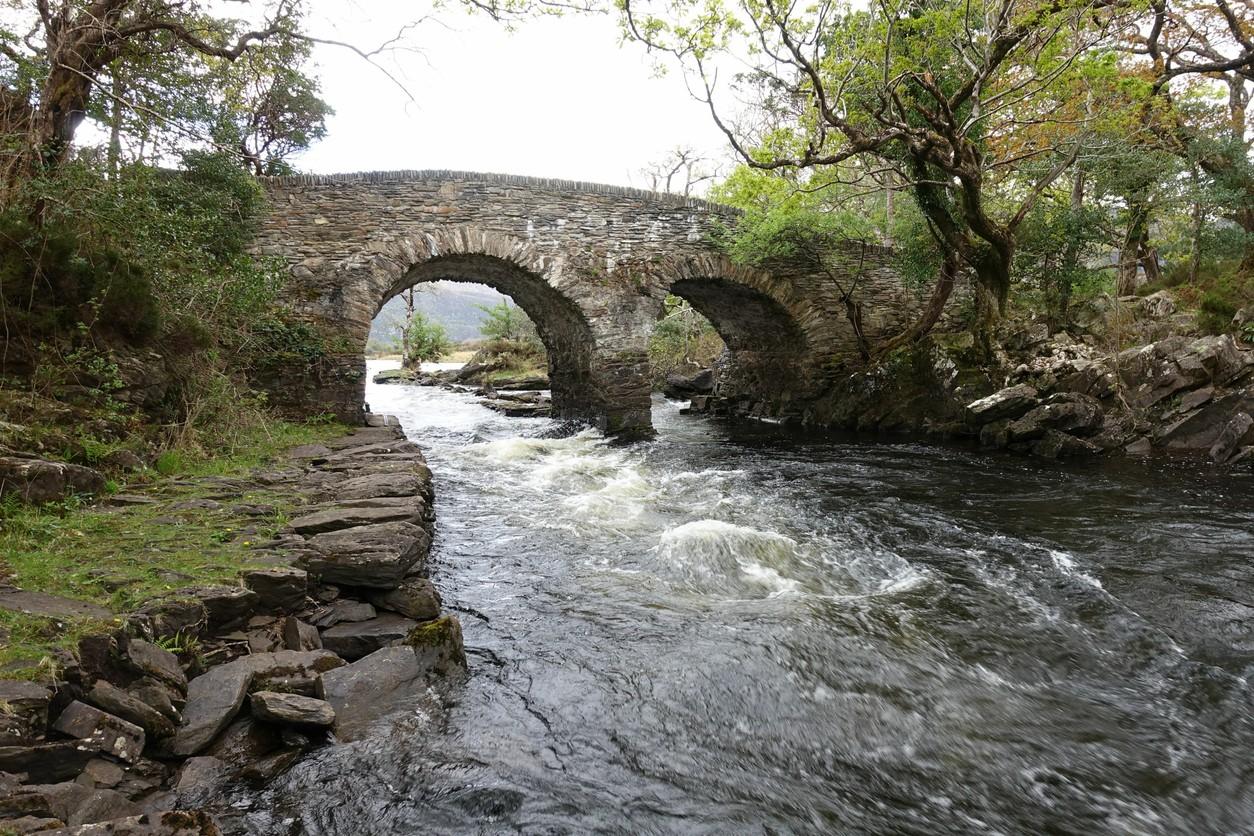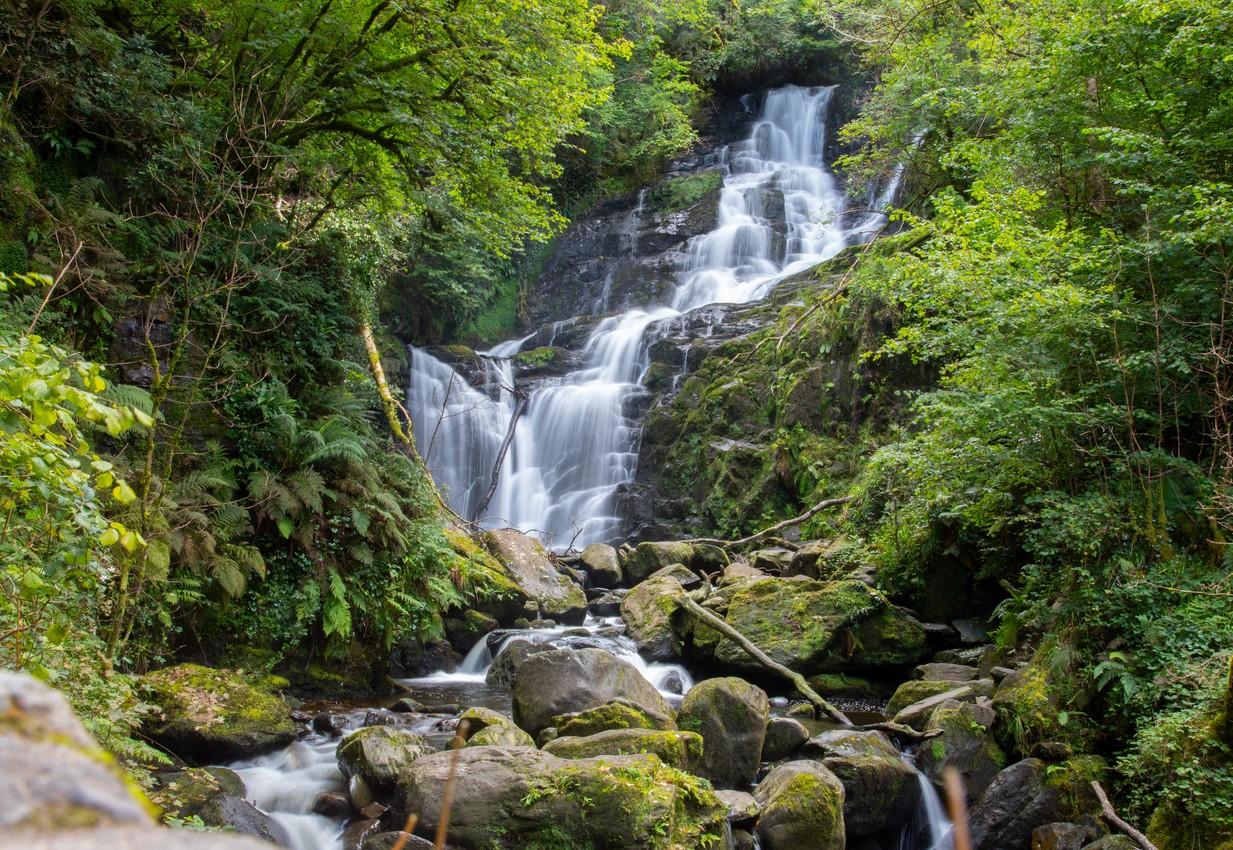Nestled in the heart of County Kerry, Ireland, Killarney National Park is a breathtaking natural wonderland that beckons to be explored. Spanning over 25,000 acres, this majestic park boasts an awe-inspiring blend of rugged mountains, tranquil lakes, ancient woodlands and a rich tapestry of flora and fauna. As the first national park established in Ireland, Killarney National Park has captivated the hearts of nature enthusiasts, outdoor adventurers and history buffs alike for generations. The park's origins can be traced back to 1932 when the Muckross Estate was donated to the Irish Free State. This generous act of philanthropy laid the foundation for what would eventually become one of Ireland's most cherished natural treasures. Over the years, the park has expanded to encompass additional lands, including the iconic Killarney Lakes and the awe-inspiring Mangerton and Torc Mountains.
One of the most striking features of Killarney National Park is its diverse landscape. The park is home to the majestic McGillycuddy's Reeks, the highest mountain range in Ireland, which offers challenging hikes and breathtaking vistas for intrepid explorers. The three interconnected lakes - Lough Leane, Muckross Lake and Upper Lake - are a serene oasis, perfect for boating, fishing or simply admiring the stunning reflections of the surrounding mountains. The park's ancient oak and yew woodlands, some of which date back over 4,000 years, are a testament to the enduring power of nature. These enchanting forests are home to a diverse array of wildlife, including the elusive red deer, Ireland's only native deer species. The park also boasts a vibrant bird population, with over 140 species recorded, making it a paradise for birdwatchers.
Killarney National Park is not just a celebration of natural wonders; it is also steeped in rich history and cultural heritage. The park is dotted with fascinating historical sites, such as the 15th-century Ross Castle, the Victorian-era Muckross House and the ancient monastic site of Inisfallen Island. These landmarks offer a captivating glimpse into Ireland's storied past and add a layer of depth to the park's already enchanting atmosphere.
Exploring the Killarney Lakes
One of the most iconic features of Killarney National Park is its three stunning lakes: Lough Leane, Muckross Lake and Upper Lake. These interconnected bodies of water are not only visually breathtaking but also offer a wealth of opportunities for outdoor recreation and exploration.
Lough Leane (Lower Lake)
Lough Leane, also known as the Lower Lake, is the largest of the three lakes, covering an area of approximately 19 square kilometres (7.3 square miles). This majestic lake is surrounded by lush woodlands and the imposing McGillycuddy's Reeks mountain range, creating a picture-perfect backdrop. Visitors can enjoy a stroll along the lakeshore, taking in the stunning views and breathing in the fresh air. Several local operators offer guided tours, ranging from short boat trips to full-day excursions. As you glide across the tranquil waters, you'll have the chance to see historic sites such as Ross Castle and Innisfallen Island, a former monastic settlement dating back to the 6th century. Keep an eye out for the diverse birdlife that calls the lake home, including cormorants, herons and the majestic white-tailed sea eagles.
Fishing enthusiasts will be delighted to know that Lough Leane is renowned for its excellent brown trout and salmon fishing. The lake is home to a healthy population of wild brown trout, with an average weight of 0.5 to 1 pound (0.2 to 0.5 kilograms). Salmon also run up the River Laune and into the lake during the summer months, providing an exciting challenge for anglers. Be sure to obtain the necessary permits and familiarise yourself with the local fishing regulations before casting your line. For those who prefer to stay on land, the Lough Leane Loop Walk offers a delightful way to explore the lake's shoreline. This gentle 5-kilometer (3.1-mile) trail takes you through a variety of habitats, including woodland, parkland and lakeshore. Along the way, you'll encounter historic sites such as the ruins of Muckross Abbey and the Old Weir Bridge, a picturesque stone bridge dating back to the 16th century.
Muckross Lake (Middle Lake)
Muckross Lake, the middle lake, is smaller than Lough Leane but equally enchanting. This lake is best known for its association with the stunning Muckross House and Gardens, a 19th-century Victorian mansion that serves as a popular visitor attraction. Take a stroll through the beautifully manicured gardens, which offer a delightful mix of formal and informal landscapes, before making your way down to the lakeshore. One of the most popular activities on Muckross Lake is taking a traditional jaunting car ride. These horse-drawn carriages, operated by knowledgeable local guides, offer a delightful way to explore the lake and its surroundings. For a more active adventure, rent a kayak or canoe and paddle your way around Muckross Lake. Keep an eye out for the diverse wildlife that calls the lake home, including otters, kingfishers and the elusive red deer. If you're feeling energetic, consider taking on the Muckross Lake Loop Walk. This moderate 12-kilometre (7.5-mile) trail takes you around the perimeter of the lake, offering stunning views of the water and surrounding mountains. The trail passes through a variety of landscapes, including dense woodlands, open meadows and rocky shorelines, providing a diverse and engaging hiking experience.
Upper Lake
The Upper Lake, the smallest of the three, is the most secluded and tranquil. Surrounded by dense oak and yew woodlands, this lake offers a true escape from the hustle and bustle of everyday life. Rent a kayak or canoe and paddle your way through the serene waters, taking in the breathtaking scenery and listening to the gentle sounds of nature. One of the most popular ways to experience the Upper Lake is by taking a boat tour from Ross Castle. These guided tours, which typically last around an hour, take you across Lough Leane and into the narrow, winding channels that lead to the Upper Lake.
For those seeking a more adventurous experience, consider taking on the challenge of the Gap of Dunloe. This stunning mountain pass, located between the Purple Mountain and the MacGillycuddy's Reeks, offers a thrilling combination of hiking, cycling and boating. Start your journey with a boat ride from Ross Castle to the Upper Lake, then hike or cycle through the gap, taking in the awe-inspiring vistas of the surrounding mountains and valleys. If you prefer a more leisurely pace, the Upper Lake Loop Walk is a delightful way to explore the area. This gentle 6-kilometer (3.7-mile) trail takes you through a variety of habitats, including ancient oak woodlands, open meadows and tranquil lakeshore. Along the way, you'll encounter historic sites such as the Old Weir Bridge and the 19th-century copper mines, which offer a fascinating glimpse into the area's industrial past.
Hiking and Nature Trails
Killarney National Park is a hiker's paradise, offering an extensive network of trails that cater to all levels of fitness and experience. With over 70 kilometres (43 miles) of marked trails winding through the park's diverse landscapes, you'll have no shortage of opportunities to immerse yourself in the beauty of the great outdoors.
- Muckross Lake Loop —This gentle 15-kilometer (9.3-mile) trail takes you around the perimeter of Muckross Lake, offering stunning views of the water and surrounding mountains. The well-maintained path, suitable for all ages and fitness levels, starts and ends at the Muckross House and Gardens car park.
- Torc Mountain Trail — This challenging 7.5-kilometer (4.7-mile) loop takes you to the summit of Torc Mountain, which stands at an impressive 535 meters (1,755 feet) above sea level. The trail begins at the Torc Waterfall car park and rewards hikers with breathtaking panoramic views of the Killarney Lakes and surrounding countryside.
- Gap of Dunloe — This stunning mountain pass, carved by glacial ice during the last Ice Age, offers an unforgettable 11-kilometer (6.8-mile) hiking experience through a dramatic landscape of rugged mountains, pristine lakes and lush valleys. The trail starts at Kate Kearney's Cottage and ends at Lord Brandon's Cottage, where you can take a boat back to Ross Castle.
- Reen Nature Trail —This short 3-kilometre (1.9-mile) loop, starting and ending at the Muckross Schoolhouse, takes you through a variety of habitats, including ancient oak woodlands, open meadows and tranquil riverbanks, offering the chance to spot the park's diverse flora and fauna.
- Old Kenmare Road — This historic 16-kilometer (10-mile) route, once the main road between Killarney and Kenmare, offers a challenging but rewarding hike through some of the park's most stunning landscapes. The trail starts at the Torc Waterfall car park and ends at the Kenmare Road car park, passing through dense forests, open moorlands and alongside the serene shores of the Upper Lake.
- Arthur's Loop — This moderate 6-kilometer (3.7-mile) trail, named after Arthur Young, a famous 18th-century travel writer, takes you through a variety of habitats, including ancient oak woodlands, open meadows and the shores of Muckross Lake. The loop starts and ends at the Muckross House and Gardens car park and offers stunning views of the surrounding mountains and lakes.
- Dinis Cottage Loop — This gentle 7-kilometer (4.3-mile) trail takes you around the base of Torc Mountain, offering stunning views of Muckross Lake and the surrounding woodlands. The loop starts and ends at the Dinis Cottage car park and passes by historic sites such as the Old Weir Bridge and the Meeting of the Waters, where the three lakes of Killarney converge.
- Rossbay Loop — This easy 5-kilometer (3.1-mile) trail takes you through a variety of habitats, including ancient oak woodlands, open meadows and the shores of Lough Leane. The loop starts and ends at the Ross Castle car park and offers stunning views of the lake and surrounding mountains.
- Blue Pool Nature Trail — This short 2-kilometre (1.2-mile) loop, starting and ending at the Blue Pool car park, takes you through a tranquil wooded valley to the Blue Pool, a serene pond renowned for its vibrant blue colour. The trail offers the chance to spot a variety of flora and fauna, including the elusive red squirrel and the vibrant kingfisher
- Muckross Peninsula Trail — This moderate 10-kilometer (6.2-mile) loop takes you around the Muckross Peninsula, offering stunning views of Muckross Lake and the surrounding mountains. The trail starts and ends at the Muckross House and Gardens car park and passes by historic sites such as Muckross Abbey and the Old Boathouse.
- Tomies Wood Nature Trail — This gentle 4-kilometer (2.5-mile) loop, starting and ending at the Tomies Wood car park, takes you through beautiful oak woodland on the shores of Lough Leane. The trail offers the chance to spot a variety of flora and fauna, including the majestic red deer and the rare Kerry spotted slug.
- Knockreer Estate Loop — This easy 5-kilometer (3.1-mile) trail takes you through the historic Knockreer Estate, offering stunning views of Lough Leane and the surrounding mountains. The loop starts and ends at the Knockreer House car park and passes by historic sites such as the Knockreer House and the Deenagh Lodge.
- Cronin's Yard Loop — This challenging 12-kilometre (7.5-mile) trail takes you through the heart of the McGillycuddy's Reeks, Ireland's highest mountain range. The loop starts and ends at Cronin's Yard, a popular base for hikers and climbers, and offers stunning views of the surrounding peaks and valleys.
- Muckross Abbey Trail — This short 1-kilometer (0.6-mile) trail takes you from the Muckross House and Gardens car park to the historic Muckross Abbey, a 15th-century Franciscan friary renowned for its well-preserved cloister and yew tree. The trail offers a peaceful walk through the abbey's grounds and a chance to learn about its fascinating history.
- Gearhameen Loop — This moderate 8-kilometre (5-mile) trail takes you through a variety of habitats, including ancient oak woodlands, open moorlands and the shores of Lough Leane. The loop starts and ends at the Tomies Wood car park and offers stunning views of the surrounding mountains and lakes.
Before setting out on your hike, stop by the park's visitor centre to pick up a map and get the latest information on trail conditions and any potential closures. The knowledgeable staff can also provide recommendations based on your interests and fitness level, ensuring that you make the most of your time in the park. In addition to the physical benefits of hiking, spending time in nature has been shown to have a positive impact on mental health and well-being. The tranquillity and beauty of Killarney National Park provide the perfect setting for reflection, rejuvenation and reconnection with the natural world.
When hiking in the park, be sure to follow the Leave No Trace principles to help preserve the natural beauty of the area for future generations. This means packing out all your rubbish, staying on marked trails to avoid damaging fragile ecosystems, and respecting wildlife by observing from a safe distance. It's also essential to come prepared with the proper gear and supplies. Sturdy hiking boots with good ankle support are a must, as are weather-appropriate clothing and plenty of water and snacks. A map, compass or GPS device can also be helpful, especially if you're planning on tackling some of the park's more remote trails.
Historical Sites and Landmarks
Killarney National Park is a haven for nature lovers and a treasure trove of historical sites and landmarks that offer a fascinating glimpse into Ireland's rich cultural heritage. From ancient monastic settlements to grand Victorian mansions, the park is dotted with a diverse array of structures that tell the story of the region's past.
Ross Castle
Ross Castle, an impressive 15th-century tower house, sits majestically on the shores of Lough Leane, just 2 kilometres (1.2 miles) from Killarney town centre. The castle was built by the O'Donoghue clan, who ruled the region during the Middle Ages and served as their ancestral home for centuries. In the 1650s, the castle was the last stronghold in Munster to fall to Cromwell's forces during the Irish Confederate Wars. Today, visitors can explore the castle's interior and learn about its fascinating history through guided tours, which depart from the Ross Castle car park. The tours take you through the castle's great hall, bedrooms, and battlements, offering stunning views of the surrounding lakes and mountains. You can also enjoy a scenic boat trip from the castle to the nearby islands of Innisfallen and Reen.
Interesting facts:
- Legend has it that O'Donoghue, the chieftain who built Ross Castle, still sleeps beneath the waters of Lough Leane and rises every seven years on the first morning of May, riding a white horse across the lake.
- During the Irish Confederate Wars, Ross Castle was one of the last strongholds to fall to Cromwell's forces. The castle's defenders eventually surrendered after artillery was brought in by boat to attack the castle from the water.
Muckross House and Gardens
Muckross House and Gardens, a stunning 19th-century Victorian mansion, is located just 6 kilometres (3.7 miles) from Killarney town centre. The house was built in 1843 for Henry Arthur Herbert and his wife, Mary Balfour Herbert, and was later owned by the Guinness family, of brewing fame. The Herberts were known for their lavish lifestyle and entertained many notable guests at Muckross, including Queen Victoria in 1861. Today, visitors can take a guided tour of the house's opulent rooms, which have been carefully restored to their original Victorian splendour. The tour takes you through the grand foyer, the elegant drawing room, the library, and the spacious bedrooms, offering a glimpse into the lives of the wealthy landowners who once called Muckross home. After touring the house, be sure to stroll through the beautifully manicured gardens, which cover an area of over 20 hectares (50 acres). The gardens feature a variety of styles, from the formal Italian Garden to the more relaxed Stream Garden, and are home to a diverse array of plants and trees, including rare and exotic species.
Interesting facts:
- During Queen Victoria's visit to Muckross in 1861, the Herberts spent a fortune preparing the house and grounds for her arrival. The queen reportedly enjoyed her stay but later complained about the "dreadful Irish weather."
- The Muckross Estate was donated to the Irish state in 1932 by Arthur Vincent, a wealthy American who had purchased the property from the Guinness family. Vincent's generous gift laid the foundation for the establishment of Killarney National Park.
Innisfallen Island
Innisfallen Island, a small island located on Lough Leane, just a short boat ride from Ross Castle, was home to a monastic settlement founded by St. Finian in the 6th century. The monastery became a renowned centre of learning, and the monks who lived there produced many important works of literature and art, including the famous Annals of Innisfallen, a chronicle of early Irish history. Today, visitors can take a boat trip from Ross Castle to explore the island's ruins, which include the remains of a 12th-century Romanesque church, a 10th-century high cross, and the foundations of the monks' living quarters. The island is also home to a small herd of sika deer, which were introduced to the park in the 19th century.
Interesting facts:
- The Annals of Innisfallen, which cover the history of Ireland from the 5th to the 15th centuries, were written by the monks of Innisfallen Abbey and are now housed in the Bodleian Library at Oxford University.
- According to legend, the Irish High King Brian Boru was educated at Innisfallen Abbey before going on to become one of the most powerful rulers in Irish history.
Muckross Abbey
Muckross Abbey, a well-preserved 15th-century Franciscan friary, is located just 1 kilometre (0.6 miles) from Muckross House. The abbey was founded in 1448 by Donal McCarthy Mor, the chieftain of the McCarthy clan, and quickly became an important centre of religious learning and pilgrimage. Today, visitors can explore the abbey's atmospheric ruins, which include a stunning central cloister, a well-preserved tower, and the tombs of several notable Irish chieftains and poets. The abbey is also famous for its ancient yew tree, which grows in the centre of the cloister and is believed to be over 500 years old.
Interesting facts:
- During the Cromwellian conquest of Ireland in the 1650s, Muckross Abbey was used as a barracks by English soldiers. The monks were expelled from the abbey and many of its valuable books and manuscripts were destroyed.
- The abbey's ancient yew tree has become a symbol of resilience and endurance, having survived centuries of war, upheaval, and change. According to legend, those who dare to stand inside the hollow trunk of the tree will have their wishes granted.
Torc Waterfall
Torc Waterfall, a stunning cascade located just 7 kilometres (4.3 miles) from Killarney town centre, has been a popular tourist attraction since the 19th century. The waterfall, which tumbles over a series of rocky ledges into a tranquil pool below, is easily accessible via a short walk from the Torc Waterfall car park. The waterfall is named after the Torc Mountain, which rises majestically above it and offers breathtaking views of the surrounding countryside. According to legend, the mountain is home to a magical herd of wild boars, which can only be seen by those who are pure of heart.
Interesting facts:
- In the 19th century, the Torc Waterfall was a popular spot for picnics and gatherings among the wealthy landowners and gentry of Killarney. Queen Victoria is said to have visited the waterfall during her stay at Muckross House in 1861.
- The Torc Mountain Trail, which begins at the waterfall and climbs to the summit of the mountain, offers some of the most spectacular views in the park, taking in the Lakes of Killarney, the Macgillycuddy's Reeks, and the distant peaks of the Dingle Peninsula.
Dinis Cottage
Dinis Cottage, a charming 19th-century hunting lodge located on the shores of Muckross Lake, was once a favourite retreat of the Herbert family, who owned the Muckross Estate. The cottage, which is surrounded by ancient oak woods and offers stunning views of the lake and the distant Torc Mountain, is a popular spot for picnics and a starting point for several scenic walking trails.
Interesting facts:
- The name "Dinis" comes from the Irish word "daingean," which means "fort" or "stronghold." It is believed that the site of the cottage was once the location of an ancient Irish fort.
- In the 19th century, the Herbert family would often entertain guests at Dinis Cottage, hosting lavish picnics and hunting parties in the surrounding woods and hills
Old Weir Bridge
The Old Weir Bridge, a picturesque stone bridge located near the Meeting of the Waters (where the three lakes of Killarney converge), dates back to the 16th century and offers stunning views of the surrounding lakes and mountains. The bridge is a popular spot for photography and a starting point for several scenic walking trails, including the Muckross Lake Loop. According to local legend, the Old Weir Bridge is haunted by the ghost of a young woman who drowned in the lake while trying to elope with her lover. It is said that her ghostly figure can sometimes be seen standing on the bridge, watching the waters below.
Getting to Killarney National Park
Killarney National Park is easily accessible from various parts of Ireland, making it a convenient destination for visitors. The park is located just 6.5 km (4 miles) southwest of the charming town of Killarney, which serves as an excellent base for exploring the region.
By Car — Driving to Killarney National Park is a popular and straightforward option. The park is well-connected by road, with several major routes leading to Killarney.
- From Dublin: Take the M7 motorway towards Limerick, then follow the N21 to Tralee. From Tralee, take the N22 to Killarney. The journey takes approximately 3.5 to 4 hours.
- From Cork: Follow the N22 directly to Killarney, which takes around 1.5 hours.
- From Shannon Airport: Take the N18 to Limerick, then follow the N21 to Tralee and the N22 to Killarney. The journey takes about 2 hours.
By Bus — Bus Éireann, Ireland's national bus service, operates regular services to Killarney from major cities such as Dublin, Cork and Limerick. The bus station in Killarney is located just a short walk from the town centre. From there, you can take a local bus or taxi to the national park.
By Train — Killarney has its train station, which is served by Irish Rail. Direct trains run from Dublin Heuston station to Killarney, with a journey time of around 3 hours. There are also connections from other major cities like Cork and Limerick.
By Air — The nearest airport to Killarney National Park is Kerry Airport, located just 17 km (10.5 miles) north of Killarney. The airport serves domestic flights from Dublin and seasonal international flights from destinations such as London, Frankfurt and Berlin. From the airport, you can take a taxi or rent a car to reach the national park.
Related Articles

Let us know you agree to cookies
We use marketing, analytical and functional cookies as well as similar technologies to give you the best experience. Third parties, including social media platforms, often place tracking cookies on our site to show you personalised adverts outside of our website.
We store your cookie preferences for two years and you can edit your preferences via ‘manage cookies’ or through the cookie policy at the bottom of every page. For more information, please see our cookie policy.
